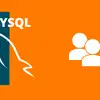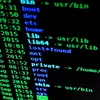uabiConsent v1.1: Cookie Management Linked with Analytics and Adsense
At JavaScript By Rudi Drusian Lange ✦Simple and free JavaScript to manage cookies in compliance with GDPR, LGPD and others. Multilingual support, customizable banner, explicit and implicit consent using signals
How to Remove Password from a PDF File in Linux Using Terminal
 At Terminal ✦
At Terminal ✦
Learn how to remove password from protected PDF files in Linux using the qpdf command line tool
How to setup openVPN server with Easy-RSA on Linux
 At Open source ✦
At Open source ✦
Complete guide to install and configure OpenVPN Server with Easy-RSA on Slackware Linux. Learn how to create certificates and keys to establish a secure and functional VPN
Certificate Management for OpenVPN with Easy-RSA
 At Open source ✦
At Open source ✦
How to create a CA to securely generate, sign, revoke, and renew certificates. Understand the role of public and private keys, requests, certificates, and more
All about fonts in Linux: Installation, management and tips
 At Terminal ✦
At Terminal ✦
Learn how to customize fonts in Linux: installation, removal and management. Find out where to download free fonts and understand the difference between static and variable fonts
How to Create and Configure initrd in Slackware Linux: Complete Guide
 At Terminal ✦
At Terminal ✦
Find out what initrd is, what it's for and how to generate and use it. Learn how to configure ELILO for a new kernel and use scripts such as mkinitrd, geninitrd and eliloconfig
How to Convert Images to WebP Using the Command Line
 At Terminal ✦
At Terminal ✦
Discover how to convert JPG, PNG and TIFF images to WebP via terminal on Linux, with the possibility of processing multiple images at the same time. Reduce the size without losing quality!
How to repair NTFS partitions in Linux. Chkdsk in Linux
 At Terminal ✦
At Terminal ✦
Fix mounting issues, inconsistencies, and errors on NTFS partitions in Linux with the ntfsfix command. Prepare a full scan on the next Windows boot
Create GPT/MBR partitions and format with NTFS/FAT32/ext4 in Linux
 At Terminal ✦
At Terminal ✦
Complete guide to managing disks on Linux: create GPT or MBR partitions, change name and type, and format as NTFS/ext4. Learn how to remove partition tables. Complete and detailed examples
Set date, time and timezone in Linux using the terminal
 At Terminal ✦
At Terminal ✦
Find out how to set the clock and timezone on Linux and hardware (BIOS/UEFI). Synchronize with NTP servers and ensure that your system clock is always up to date and accurate
How to Schedule Tasks in Linux Using Crontab: Detailed Examples
 At Terminal ✦
At Terminal ✦
Define custom scheduling ranges, explore essential commands, change the default editor, organize script scheduling by folders, and view execution logs
UEFI + GPT or BIOS + MBR: Operation and boot sequence
 At Articles ✦
At Articles ✦
Compare the differences, understand how bootloaders are loaded, and discover the best configuration to maximize performance and security, with more flexibility in disk partitioning
How to upload a new project to GitHub with Linux and SSH, no password
 At Terminal ✦
At Terminal ✦
Set up Git in your local repository, sync with GitHub, learn about versioning, and use tags and releases to organize versions of your project and make it available for download
What SSH keys are and how to use them instead of your network password
 At Terminal ✦
At Terminal ✦
Learn how to generate the public and private key pair, understand their functions and the RSA and Ed25519 algorithms. How to transfer the key and authorize the connection without a password
Using Git to share and collaborate on a project
 At Terminal ✦
At Terminal ✦
How to clone a project, make changes and merge them, customize history queries, name commits as versions and compare them, search using Git and more useful commands
Learning the basics of Git and the use of branches
 At Terminal ✦
At Terminal ✦
An introduction to git: how to set up in a project, define basic configurations, manage branches, view histories and deal with conflicts
StickyFoot: javascript for displaying ads on the page footer
 At JavaScript ✦
At JavaScript ✦
Allows you to display sticky ads at the bottom of the website with a programmed time to appear or reappear
Managing users and privileges in mysql
 At Database ✦
At Database ✦
How to add, remove, search for active users and their privileges, how to create passwords with expiring date or login with no password. See how to set permissions with databases and tables
Commands to get information from the machine's hardware in Linux
 At Terminal ✦
At Terminal ✦
List of commands to display hardware configurations on the Linux machine using the terminal: cpu, memory, usb, network, video cards, HD, SSD, DVDs, sata, partitions, free space
Checking machine hardware information in the Linux terminal with lshw
 At Terminal ✦
At Terminal ✦
The lshw command is used in the Linux terminal to generate detailed reports about hardware. See memory, processor, HD, SSD, network, pci, usb, scsi, sata, all in one command
TinyMCE: wrap selected text in the editor with a span element
 At JavaScript ✦
At JavaScript ✦
Configure a button to wrap selected text in the editor with a span element containing a specific class with custom styles
WabiLGPD, a script to implement cookie management on your website
 At JavaScript ✦
At JavaScript ✦
Creates a customizable LGPD consent form, with multilingual support, in addition to automatically loading Google Analytics and Adsense upon user consent
Change permissions only for directories or files recursively
 At Terminal ✦
At Terminal ✦
Useful commands in the Linux terminal to fix permissions on large file and directory structures
Detect the language used in the user's browser using PHP
 At PHP ✦
At PHP ✦
How to get the browser language in PHP and how to use this information to create a script that receives this value if no language is configured



